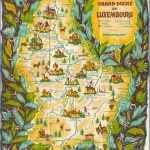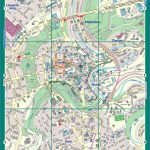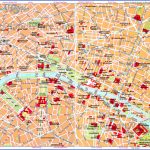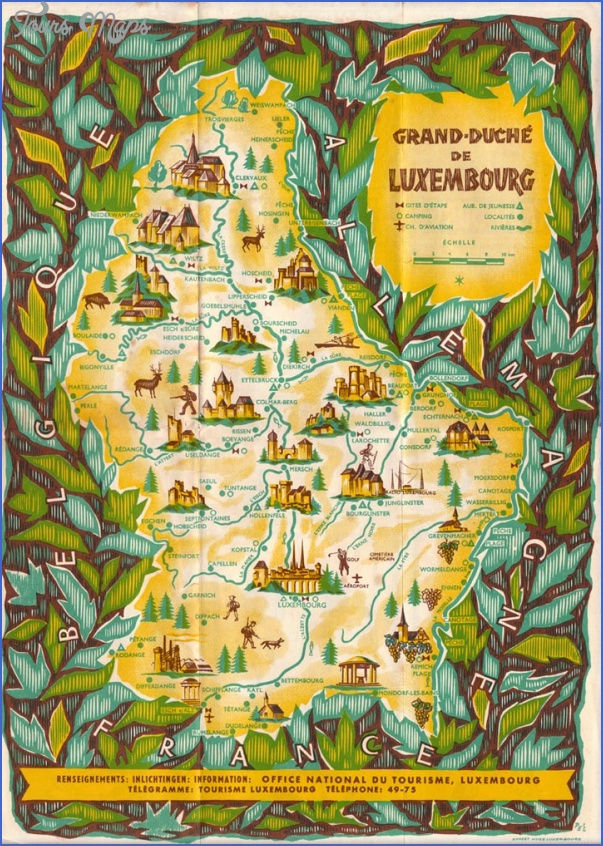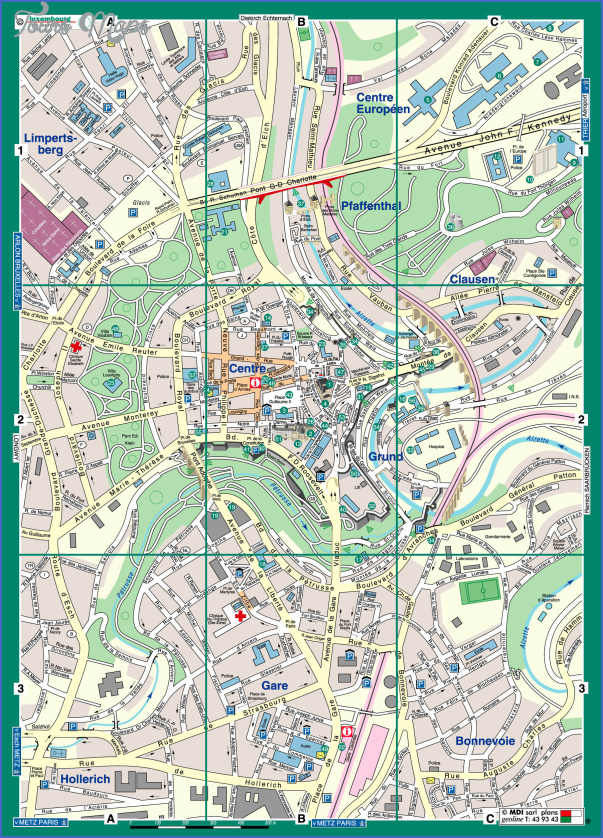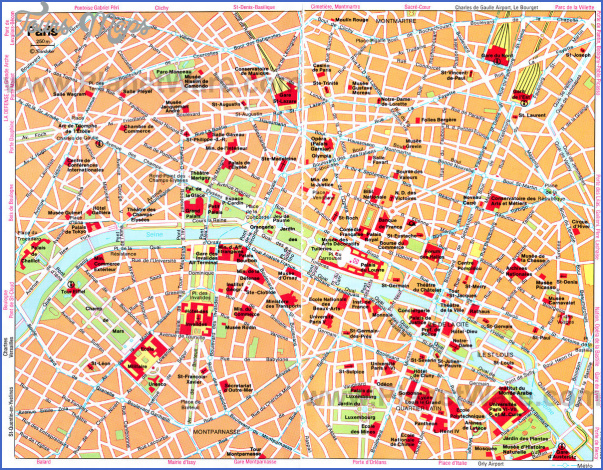Luxembourg Map Tourist Attractions
SIGHTS
Luxembourg City is compact enough to be explored without a map; by wandering around you’ll bump into most of the major sights. The most spectacular views of the city can be seen from any of the three major bridges connecting to the city center particularly the bridge closest to the hostel and the Bock Casemates and from place de la Constitution. For guidance, follow the signs pointing out the Wenzel Walk. It leads visitors through 1000 years of history as it winds around the old city, from the chemin de la Corniche down into the casemates.
Its petite size doesn’t stop Luxembourg from throwing a colossal dusk-till-dawn fete to honor the birthday of its ruling monarch. It’s not actually current Grand Duke Henri’s birthday; the date, June 23, was set when his grandmother, Duchess Charlotte, deemed her January birth date inopportune for an outdoor celebration of a suitable size.
The action begins in the early evening of June 22nd with a lengthy procession through the old city. At 11pm, fireworks rip through the air, illuminating the city’s graceful bridges against the night sky. The procession may have ended-but the real party is just getting started. In an instant, the tiny alleys and narrow streets of this fairy-tale capital are magically transformed into impromptu bars and dance floors. A steady stream of alcohol and universal desire to get down saturate the tiny capital.
The rising sun traditionally breaks up the party, as disheveled revelers stumble to the Place d’Armes for breakfast. Although June 23rd is the official holiday, most Luxembourgers spend the day catching up on sleep missed the night before. The holiday’s highlight, for those who can get out of bed, is watching Grand Duke Henri stroll, often with family and without visible security, through the center of what once again feels like a small town.
FORTRESSES AND THE OLD CITY. The lOth-cen-tury Bock Casemates fortress, part of Luxembourg’s original castle, looms over the Alzette River Valley and offers a fantastic view of the Grund and the Clausen. This strategic stronghold was closed in 1867 and partially destroyed after the country’s declaration of neutrality, but was used during WWII to shelter 35,000 people while the rest of the city was ravaged. Of the original 23km, 17 remain today, parts of which are used by banks, schools, and private residences. (Entrance on r. Sigefroi, just past the bridge leading to the hostel. Open Mar.-Oct. daily 10am-5pm. ‚1.75, students ‚1.50.) The Petrusse Casemates were built by the Spanish in the 1600s to reinforce the medieval structures and were later improved by the Austrians. In the 19th century, a second ring of fortification was extended and a third was begun around the expanding city, lending Luxembourg the nickname Gibraltar of the North. (On pi. de la Constitution. Open July-Sept Tours every hr. UamApm. ‚1.75, students ‚1.50.) Stroll down through the green Petrusse valley, or catch one of the green tourist trains that depart from pi. de la Constitution and meander through the city and into the valley. (Trains n651 16 51. Mid-Mar. to Oct every 30min. 10am-6pm except lpm. ‚6.50.)
MUSEUMS. The Luxembourg Card (751) covers entrance to all museums in the city and free public transportation throughout Luxembourg. The All-in-One Ticket covers five museums over three days (‚7 at the Municipal Tourist Office). The eclectic collection at the Musee National d’Histoire et d’Art chronicles the influences of the various European empires, from ancient to contemporary, that controlled Luxembourg. (Marche-aux-Poissons, at r. Boucherie and Sigefroi. s479 33 01; www.mnha.lu. Open Su and Tu-Sa 10am-5pm. ‚5, students ‚3.) Ignore its name; the only gamble at the Casino Luxembourg is on the changing exhibitions of , contemporary art. (41 r. de Notre Dame, near pi. de la Constitution. Exhibition info s22 50 45; www.casino-luxem-bourg.iu. Open M and W-Su llam-6pm, Th until 8pm. ‚4, under-26 ‚3. Under-18 free.) The Musee d’Histoire de la Ville de Luxembourg features quirky exhibits that show the history of the city through an interactive display, accompanied by artifacts and explanations in French. (14 r. du St-Esprit “e47 96 30 61. Open Su and Tu-Sa 10am-6pm, Th until 8pm. ‚5, students ‚3.70.)
OTHER SIGHTS. Built as the city hall in 1574, the Renaissance Palais Grand Ducal lies in the heart of the downtown area and became the official city residence of the Grand Duke in 1890. (Required tours mid-July to Aug. M-F afternoon and Sa morning; tickets sold at the Tourist Office. Reservations s22 28 09. English-language tours available. ‚5.45.) Nearby, the 17th-century
Luxembourg Map Tourist Attractions Photo Gallery
Maybe You Like Them Too
- Explore Góra Kalwaria, Poland with this detailed map
- Explore Gumdag, Turkmenistan with this detailed map
- Explore Telfes im Stubai, Austria with this detailed map
- Explore Langenselbold, Germany with this detailed map
- Explore Krotoszyn, Poland with this detailed map

